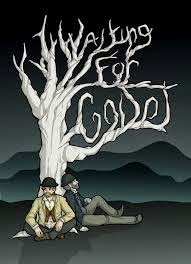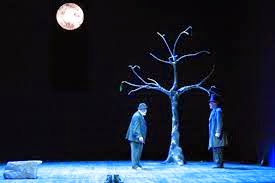Maharaja Krishnakumarsinhji Bhavnagar University Bhavnagar
Smt. S. B. Guardy Department of English
Written by: Poojaba G. Jadeja
Roll No.: 20
Year: 2014, Semester: 3rd
Paper:10: The American Literature
Roll No.: 20
Year: 2014, Semester: 3rd
Edger Allan Poe’s Heroes as Villains
Introduction:
 Edger Allan Poe is a famous American writer, who is renowned
for his ‘horror and mystery’ tales. He is not only short-story writer, but his
poetry is also well-appreciated. Even the language of his short-stories is
poetic and musical.
Edger Allan Poe is a famous American writer, who is renowned
for his ‘horror and mystery’ tales. He is not only short-story writer, but his
poetry is also well-appreciated. Even the language of his short-stories is
poetic and musical.
Poe’s stories are about murder, revenge, insanity, torture
and adventure. His gothic stories are too famous that many modern movies take
an idea from his stories. His stories have mystery and secret that reader
cannot put aside his interest and reading.
His stories like “Berenice” is horror story about teeth,
“The Black Cat” is a tale of a Cat, “The Cask of Amontillado” is a revenge
story, in his stories like “ The Facts in the case of M. Valdemar” and
“Ligeia”, supernatural elements are described.
The characters of most of the stories by Poe are
psychologically ill, suffering from psycho-phobia, split personality, insanity
or psychological disorders.
As his stories also present the theme of horror, murder,
death, revenge, burial of living person, torture and talking with dead persons,
their characters are also not normal human beings. They are not social or
emotional but against humanity and unsocial. That’s why, in Poe’s every
stories, one cannot find more than five characters. And in the most of the
stories, there are only two characters.
Poe also wrote adventure stories, love stories, detective
stories but his vast contribution is on horror stories. His horror, mysterious,
gothic stories are evaluated, criticised often by many critics.
One critic noted about Poe’s unsocial stories that, the tale
is precluded from expounding facts and experiences that are socially important;
therefore it deals with the exceptional with something that arrests reader’s
curiosity from the start.
Another French critic, M. Brunetiere noticed the social
insignificance of the incident upon which the tales are based. He points out
that,
“The material for the tale is to be sought in certain peculiarities or variations of passions, which, though psychologically or pathologically interesting are socially insignificant. The incidents are never taken out of the main way of life, but out of its border-things that happen on the margin.”
Poe gives experiences that are on the margin of sanity. And
as the critics noted, his characters are also not social but at the margin of
sanity, not as normal human beings.
Poe’s characters are generally
abnormal and psychologically ill.
And because of their psychological disorder, events, which are inhuman, occur.
Their neurotic nature becomes reason of the tragic end. Like in the “Tell-Tale
Heart” the narrator is suffering from phobia of the old man’s eyes, which leads
him to kill the old man.
In many of the stories, the characters are inhuman.
They are murders, even they can bury person alive. Their murders are so cruel
that it raises fear and terror on the minds of readers. In every story, all the
deeds, the characters do, are inhuman and cruel than beasts. For example, the
stories like, ‘The Black Cat’, ‘The Tell-Tale Heart’, ‘The Cask of
Amontillado’ , ‘Fall of the House of Usher’, ‘The Premature Burial’, the
characters inhumanly kills another fellow without any valid reason. These
stories have murderers as a hero and innocent victims.
As these characters are inhuman and abnormal, Poe’s
characters, who wanted to take revenge,
have no logical reasons. Only because of very small issues or insults, they
killed cruelly others to take revenge. The stories like, ‘The Cask of
Amontillado’, ‘The Black Cat’, ‘William Wilson’ and many other stories are
revenge stories, in which the narrator or the character murders inhumanly to
take revenge of his insult according to his belief.
Poe’s female characters
have not feminine emotions or feelings but they are also suffering from illness,
split personality and interested in killing their victims. They are also
portrayed as horrible, mysterious and scarifying, with whom Poe gives gothic
touch to the stories. Stories like, ‘The Fall of the House of Usher’,
‘Ligeia’ have horrible female characters, who has not emotion of love, pity
or soft feelings but psychologically ill and interested in killing other
persons.
As Poe’s characters are murderers and criminals, they are immoral. Stories of Poe do not suggest any
moral message, but the deeds of the characters are immoral. Even the heroes
made victim the persons who are innocent, moral and don’t done anything wrong
with the character. The characters have no morality or moral conscience. They
have not emotions of love, pity, sympathy for human beings, even for their
family members or relatives. Like, in the story, ‘The Black Cat’, the
narrator kills his innocent wife. In ‘Tell-tale Heart’, the narrator
kills the sane and genuine old man, who never be wrong to him.
These characters are
so immoral that they have not ‘Guilt
Conscious’. After murdering cruelly, the characters have not feeling of
guilt, sorrow for their bad deeds. With psychoanalysis, one can note that, all
the characters are affected by their ‘Id’
and have no concern with ‘Ego’
and ‘Super ego’. So, they seem as inhuman and immoral, without
having human values. That is the most interesting and noteworthy characteristic
of the characters of Poe’s short stories.
Sometimes, Poe describes supernatural elements in his
stories. His characters are so passionate that even death cannot stop them. Poe
describes extra-ordinary, supernatural characters in his stories. They are
interested in taking revenge even after their death.
So, Poe presented his villains – heroes so passionately, who
are men of action, that they can be murderer or bury living person.
All the characteristics suggest that, these characters have
no human emotions, morality and sanity, but they are criminals, murderers,
anti-social like villains who harmed others just because of their personal
neurotic condition or psychological illness.
They have not element of ‘Hero’ but they are anti-heroes and
inhuman. So, most of the characters of Poe’s stories are villains –
anti-heroes.
- Poe’s Heroes as Villains:
There are some examples of major characters of Poe’s tales,
who are in the centre of the story; ‘Hero’ but their inhuman deed made them
villains of the stories. These are some examples of stories and characters
which has villains as hero.
He is the narrator who narrates the story of his friend
Fortunado. The narrator cold heartedly murders his friend, Fortunado with
walling him alive. The reason of his killing is very silly and illogical. But
the narrator Montresor is so passionate and pitiless that he buries his friend
behind the bricks without feeling bad or sorrowful for him. He is such a
villain like Iago in Shakespeare’s ‘Othello’ who cannot be recognized by
victims as their villains or reason of suffering and death. As he also accepts,
“…to smile in his face, and he did not perceive that my
smile now was at the thought of his immolation.”
Unnamed narrator:
(The Tell-tale Heart)
Only because of having fear from pale, blue eyes of old man,
he kills cruelly kind and gentle old man. The narrator of this story is a
murderer. He not only killed old man but, with cold-heartedly cut the dead body
like a beast. He has not a guilt conscious, but as he has psycho-phobia, he
cannot bare the sound of heartbeats, which he constantly heard, and accepts his
crime.
He is such a villain who has not desire for money or not any
reason for killing, still he kills only because of his mental problem, insanity.
Narrator is a drunkard and killed his innocent wife and
hanged his pet animal-Cat (Pluto) inhumanly. The character or the narrator
himself narrated his story of murdering his pet cat and also torturing his
wife, killing and burying her on the wall.
The way his noble character changes into villain is
described by him. He is so passionate and merciless that he hanged his lovely
cat. And because of fear he wanted to kill another cat. Even he is so devil
like figure, that he kills his wife without any reason. Having criminal mind,
he is intelligent enough to hide his crime and he walled his wife behind the
bricks of his room. His character is like ‘Monster’ who has not pity and love
for animals or even for humans but habit of killing.
Other characters, which are not presented as hero or central
figure, with power of goodness and morality but immoral and with devilish mind
are described below…,
Prince Prospero:
(The
Masque of the Red Death)
Though he is a prince, he tries to escape from death like
cowards instead of fighting like hero. The character is so fearful that he
tries to escape from red death as described in the story. He did not take care
of his kingdom, but invites healthy friends from outside. He is a coward,
fearful and immoral, even has no values of prince, who has not courage like
hero.
Woman character, she is suffering from psychological
illness. And she tries to kill her twin brother Roderick Usher. Even she return
from death to kill her brother, both died at the end of the story. She is the
feminine figure, like other female characters of Poe’s story, which has not
beauty and love but haunting feelings.
William Wilson:
(William
Wilson)
The character is psychologically abnormal and tries to commit
suicide as he understand and fearful with himself. He believes that there are
two characters and he tries to kill another character having similar name. He
has not elements of normal human beings but his character is with all the vices
and gray shade of mind who tries to kill himself, believing as other person.
Conclusion:
With these examples of characters, we can say that, Poe’s characters
have no morality and human values, but they are presented with evil deeds,
monstrous figures and criminal minds.
Poe’s most of the tales are psychological, horror, gothic,
detective, supernatural, mysterious, they are related to crime and have characters
who are abnormal, murderers and suffering from their own mentality.
In American literature, Poe has his own place because of his
unique stories. He is famous for his narrative style, technique and use of
language. Though his mysterious stories are famous, there is verity of themes and
issues in his stories. Human psychology is well presented in Poe’s tales.
It has a power of fascination that one cannot keep aside reading,
even the interest cannot move for a moment while reading, because of Poe’s liveliness
and power of description.




.jpg)

.jpg)

.jpg)
.jpg)
.jpg)



